How to Fertilize Pineapples: Secrets to Thriving Plants
- April 9, 2024
- 1 comment
Discover the secrets on how to fertilize pineapples for thriving plants. Expert tips for lush growth and bountiful harvests. Start now! Diving into the world of pineapple cultivation brings both excitement and challenges. The key to nurturing healthy pineapple plants goes beyond just planting and watering; it’s in mastering the nuances of fertilization. This guide offers expert tips and strategies to ensure your pineapple plants grow robustly. Learn about selecting the right fertilizer, understanding the perfect fertilizing schedule, and more.
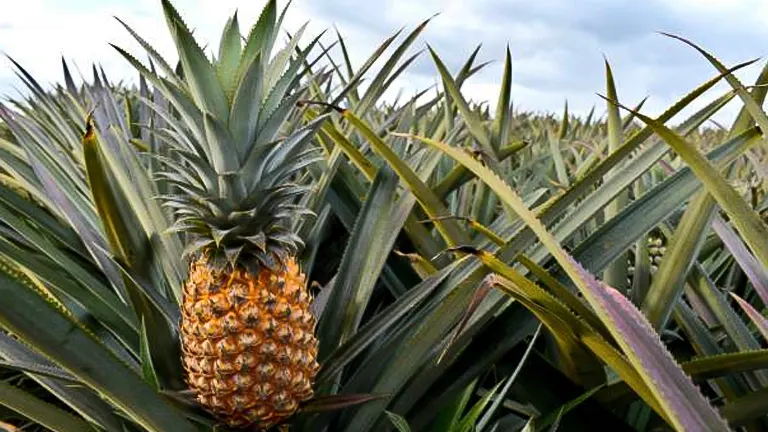
Whether you’re an experienced gardener or taking your first steps in growing pineapples, the insights shared here will guide you towards lush growth and generous harvests. Join us as we explore the essentials of effective pineapple fertilization, paving the way to your gardening success.
Table of Contents
- Understanding Pineapple Plants
- The Right Time to Fertilize Pineapples
- Choosing the Right Fertilizer
- Step-by-Step Guide on How to Fertilize Pineapples
- Proper Plant Spacing in Pineapples
- Effective Fertilization Techniques for Pineapple Plants
- Pruning Techniques for Healthier Pineapple Plants
- Common Mistakes in Fertilizing Pineapples
- Advanced Tips for Maximizing Pineapple Plant Health and Yield
- Conclusion
- FAQs
Understanding Pineapple Plants
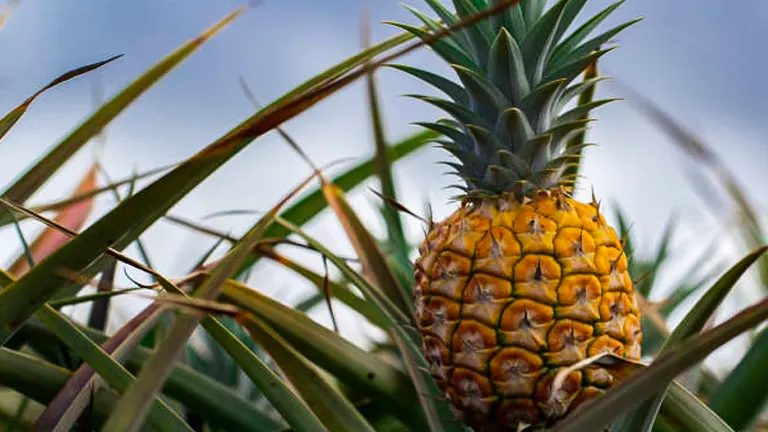
Pineapple plants (Ananas comosus), with their distinctive spiky crowns and lush foliage, present a unique cultivation profile that sets them apart from typical fruit crops. Native to the tropical regions of South America, they have adapted to thrive in a variety of warm climates around the world. Pineapples flourish in temperatures ranging from 65°F to 95°F (18°C to 35°C) and require well-drained, slightly acidic soil (pH 5.5 to 6.5) to prevent root rot and ensure optimal nutrient uptake.
A standout feature of pineapple cultivation is its specific nutritional requirements, reflecting the plant’s unique growth cycle from flowering to fruit development. As members of the Bromeliaceae family, pineapples employ a crassulacean acid metabolism (CAM) photosynthesis pathway, allowing them to efficiently utilize water and nutrients in harsh, drought-prone conditions. This adaptation influences their fertilization needs, emphasizing the importance of foliar feeding—applying liquid fertilizer directly to the leaves—to complement traditional soil fertilization methods.
Pineapples absorb the majority of their moisture and nutrients through their leaves, a trait that necessitates a tailored approach to fertilization. Foliar feeding is particularly effective for delivering essential nutrients during critical phases of growth, such as the initiation of flowering and fruit development. This method ensures that nutrients bypass the soil and go straight to the plant’s vascular system, offering a more immediate and targeted nutritional boost.
Scientific Analysis and Nutrient Requirements
Pineapples have a specific set of nutrient requirements that support their growth, fruit development, and overall health. The table below outlines the essential macro- and micronutrients vital for pineapple cultivation, along with their respective roles and recommended concentrations for optimal growth.
| Nutrient | Role in Plant Growth | Recommended Concentration (ppm) |
|---|---|---|
| Nitrogen (N) | Promotes leaf growth and vigor | 150 – 200 |
| Phosphorus (P) | Supports root development and fruit maturation | 30 – 50 |
| Potassium (K) | Enhances fruit quality and disease resistance | 450 – 500 |
| Magnesium (Mg) | Vital for photosynthesis and enzyme activity | 50 – 100 |
| Calcium (Ca) | Integral for cell wall structure and growth | 200 – 250 |
| Iron (Fe) | Essential for chlorophyll synthesis | 100 – 150 |
| Manganese (Mn) | Involved in photosynthesis and nutrient uptake | 50 – 100 |
| Zinc (Zn) | Crucial for hormone regulation and growth | 50 – 70 |
For the scientifically inclined and those with a nerdy mindset, understanding these nutritional specifics is crucial for fine-tuning fertilization strategies. Tailoring fertilizer compositions and applications to meet these precise requirements can significantly impact the health and productivity of pineapple plants. By adopting a scientific approach to fertilization, growers can optimize nutrient availability, ensuring that pineapples receive the balanced diet they need to thrive from flowering through to fruit development.
The Right Time to Fertilize Pineapples
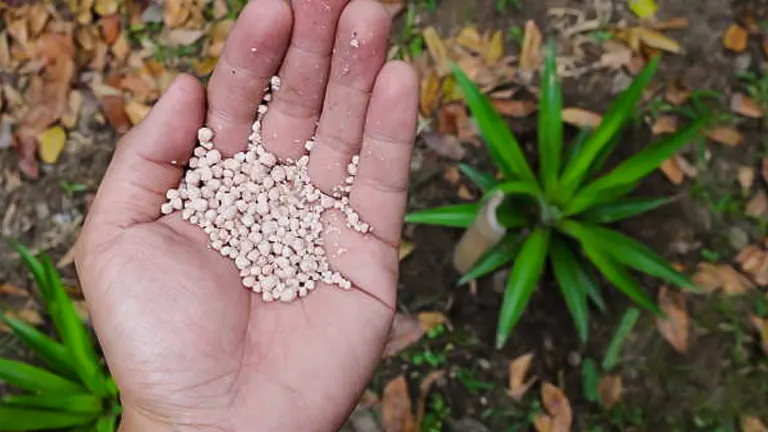
Understanding the fertilization needs of pineapple plants (Ananas comosus) is fundamental to achieving optimal growth and yield. The fertilization timing is intricately linked to the plant’s physiological stages and external environmental cues, necessitating a strategic approach that aligns with these factors.
Pineapples follow a distinct growth cycle that can be broadly categorized into three phases: initial growth, flowering initiation, and fruit development. Each stage has unique nutritional demands, influenced by the plant’s internal energy allocation and external environmental conditions.
Detailed Fertilization Schedule
- Initial Growth Phase (0-6 months): This stage focuses on establishing a strong root system and healthy foliage. Nitrogen is crucial here for vegetative growth, but it should be balanced with phosphorus and potassium to support overall plant health.
- Flowering Initiation (7-12 months): As the plant matures and prepares to flower, increasing the phosphorus supply promotes the development of the inflorescence. The application of a fertilizer with a higher phosphorus content relative to nitrogen and potassium is recommended.
- Fruit Development and Maturation (13-18 months): Post-flowering, the emphasis shifts towards potassium, which supports fruit development, enhances sugar accumulation, and improves disease resistance. However, a balance of all three primary nutrients is still necessary to maintain plant health.
Environmental Considerations and Seasonal Adjustments
Fertilization efficiency is significantly influenced by environmental conditions, particularly in regions experiencing marked wet and dry seasons. High rainfall can lead to nutrient leaching, while drought conditions can limit nutrient availability and uptake.
- Wet Season Onset: In tropical regions, aligning the application of water-soluble fertilizers with the onset of the wet season can improve nutrient absorption and utilization, leveraging the natural increase in soil moisture.
- Temperate Climates: For areas with less pronounced seasonal changes, understanding subtle shifts in daylight and temperature can guide the timing of fertilization to coincide with natural growth spurts.
What is the Best fertilizer for pineapple plants
| Growth Phase | Primary Nutrient Focus | Recommended Fertilizer Ratio (N-P-K) | Application Period |
|---|---|---|---|
| Initial Growth | Nitrogen | 10-10-10 or similar | 0-6 months from planting |
| Flowering Initiation | Phosphorus | 8-24-24 or similar | 7-12 months from planting |
| Fruit Development | Potassium | 5-10-15 or similar | 13-18 months from planting |
Additional Insights for Advanced Cultivators
For those with a keen interest in optimizing their fertilization strategy:
- Micronutrient Supplementation: Adding micronutrients such as magnesium, zinc, and boron can address specific deficiencies and enhance plant resilience and fruit quality. Soil tests can guide these supplemental applications.
- Environmental Adaptations: Adjusting fertilization schedules based on real-time environmental monitoring (e.g., soil moisture levels, rainfall predictions) can significantly increase fertilizer use efficiency and plant performance.
Choosing the Right Fertilizer
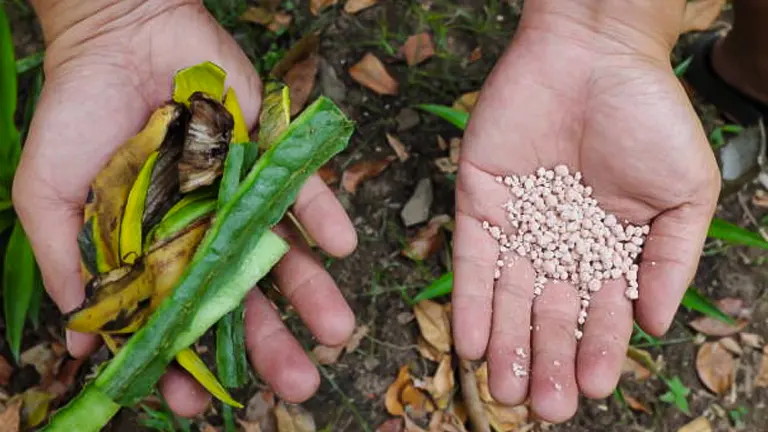
The health and yield of pineapple plants are heavily influenced by the choice of fertilizer, making it a critical decision in the cultivation process. Fertilizers not only supply essential nutrients but also affect soil health and microbial activity, which in turn influence plant growth and fruit quality. Understanding the distinctions between organic and synthetic fertilizers, as well as the specific nutrient needs of pineapples, can guide growers in making informed decisions.
Organic vs. Synthetic Fertilizers
Organic Fertilizers: These are derived from natural materials, such as plant matter, animal waste, or mineral deposits. They release nutrients slowly over time, mimicking the natural soil nutrient cycle. This gradual release supports sustained plant growth and enhances soil structure and microbial life, leading to improved soil fertility over the long term. Examples include compost, bone meal, and blood meal.
Synthetic Fertilizers: Manufactured from chemical compounds, synthetic fertilizers provide nutrients in a more concentrated and readily available form. This allows for immediate nutrient uptake by plants, offering a quick solution to nutrient deficiencies. However, overuse can lead to nutrient leaching, soil degradation, and environmental harm.
Nutrient Requirements and Fertilizer Ratios
Pineapple plants require a balanced diet of macronutrients—nitrogen, phosphorus, and potassium—to support their growth, flowering, and fruiting stages. The optimal N-P-K ratio varies throughout these stages to meet changing nutritional demands.
- Nitrogen (N): Essential for foliage growth and photosynthesis.
- Phosphorus (P): Supports root development, flower initiation, and fruit set.
- Potassium (K): Critical for water regulation, enzyme activation, and overall plant health.
Fertilizer Selection Table
To aid in selecting the right fertilizer, the following table provides recommended N-P-K ratios for each growth phase, along with organic and synthetic options:
| Growth Phase | N-P-K Ratio | Organic Options | Synthetic Options |
|---|---|---|---|
| Initial Growth | 10-10-10 | Compost, Fish Emulsion | Balanced Synthetic Blend |
| Flowering | 8-24-24 | Bone Meal, Bat Guano | High Phosphorus Synthetic Blend |
| Fruit Development | 5-10-15 | Potassium-rich Kelp Meal | Potassium Enhanced Synthetic Blend |
Additional Considerations for Advanced Cultivators
Advanced cultivators aiming for precision in nutrient management might consider integrating soil testing into their fertilization strategy. Soil tests reveal specific nutrient deficiencies and pH imbalances, allowing for targeted amendments that cater precisely to the plant’s needs and the soil’s condition. Additionally, incorporating micronutrients such as magnesium (Mg), calcium (Ca), and iron (Fe) can address common deficiencies and bolster plant health and fruit quality.
Step-by-Step Guide on How to Fertilize Pineapples Plants
Step 1: Understand Your Pineapple Plant’s Needs
- Research the specific nutrient requirements of pineapple plants.
- Recognize the growth stages of pineapples: planting, vegetative growth, flowering, and fruiting.
Step 2: Soil Testing
- Conduct a soil test before planting and annually thereafter. This helps determine soil pH and nutrient levels.
- Adjust the soil pH if necessary, aiming for a slightly acidic pH of 5.5 to 6.5, which is ideal for pineapples.
Step 3: Choose the Right Fertilizer
- Select a balanced fertilizer with an N-P-K ratio (Nitrogen-Phosphorus-Potassium) suitable for pineapples, such as 10-10-10 or 6-6-6, for general growth.
- For organic options, consider compost, fish emulsion, or bone meal to provide a slow-release nutrient source.
Step 4: Initial Fertilization
- Fertilize lightly at planting to encourage root development. Use about 1 ounce of balanced fertilizer spread evenly around the plant, avoiding direct contact with the stem.
Step 5: Regular Fertilization Schedule
- Adopt a regular feeding schedule. Fertilize pineapple plants every 4-6 weeks during their active growing season.
- Increase phosphorus intake during the pre-flowering stage to encourage blooms. Switch to a fertilizer with a higher phosphorus ratio, like 8-24-24.
Step 6: Fertilizing Technique
- Apply fertilizer evenly around the plant, extending out to the drip line (the area directly below the outer circumference of the pineapple leaves).
- For foliar feeding, dilute water-soluble fertilizer and spray onto the leaves early in the morning or late in the afternoon to avoid evaporation.
Step 7: Monitor and Adjust
- Observe your plants for signs of nutrient deficiency or excess and adjust your fertilization practices accordingly.
- Signs of deficiency include slow growth, yellowing leaves, and poor fruit development. Over-fertilization can lead to leaf burn, stunted growth, and environmental damage.
Step 8: Pre-Harvest Preparation
- Reduce nitrogen application as the fruit begins to mature to encourage sweetness and proper ripening.
- Keep monitoring the plant’s overall health and adjust your care routine as needed.
Step 9: Post-Harvest Care
- After harvesting, give your pineapple plant a boost with a balanced fertilizer to prepare it for the next growing cycle.
- Continue to monitor soil health and adjust fertilization as needed based on soil test results and plant performance.
Step 10: Environmental Considerations
- Always consider the environmental impact of your fertilization methods. Opt for organic fertilizers when possible and avoid over-fertilization to prevent nutrient runoff into water systems.
- Consider implementing sustainable practices like composting to improve soil health and reduce waste.
Proper Plant Spacing in Pineapples
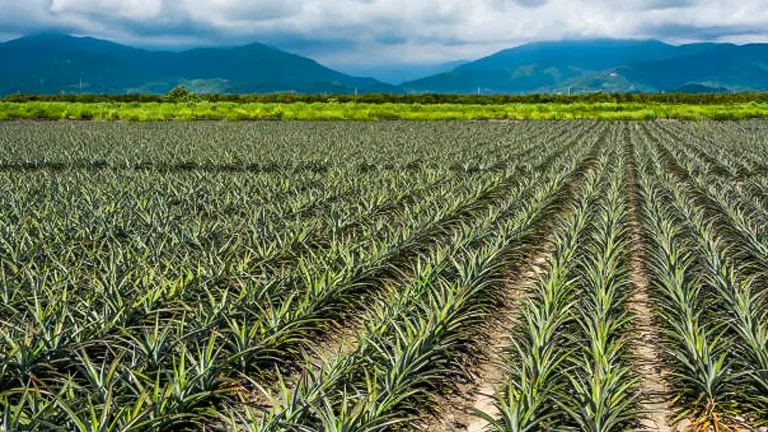
Plant spacing is a fundamental aspect of pineapple cultivation that directly influences sunlight exposure, air circulation, nutrient distribution, and pest and disease management. The strategic arrangement of pineapple plants affects not only the health and growth of individual plants but also the overall yield and efficiency of the farm. Understanding the principles of proper spacing and adjusting practices based on cultivation intensity and goals are crucial for optimizing production.
Scientific Basis for Plant Spacing
Pineapples (Ananas comosus) utilize a crassulacean acid metabolism (CAM), which is highly efficient in water use. This efficiency allows them to be planted more densely than crops with less water-efficient photosynthesis pathways. However, even with CAM, pineapples require adequate space for optimal sunlight absorption and air flow to minimize disease risk and ensure sufficient nutrient availability for each plant.
Spacing Guidelines for Different Cultivation Intensities
The table below outlines recommended spacing guidelines for different pineapple cultivation intensities, providing specific measurements that balance land use efficiency with plant health and productivity:
| Cultivation Intensity | Plant-to-Plant Distance | Row-to-Row Distance | Plants per Acre |
|---|---|---|---|
| Low Density | 24-30 inches (61-76 cm) | 36 inches (91 cm) | ~7,260 |
| Medium Density | 12-14 inches (30-35 cm) | 24 inches (61 cm) | ~14,520 – 17,424 |
| High Density | 10 inches (25 cm) | 20 inches (51 cm) | ~24,830 |
Additional Considerations for Enhanced Cultivation
- Microclimate Management: Proper spacing helps in creating an optimal microclimate around each plant, which is crucial for reducing the humidity levels that can favor the development of fungal diseases.
- Nutrient Access: Adequate space between plants ensures that each pineapple has access to the necessary nutrients without significant competition, which is vital for the development of the fruit.
- Light Exposure: Ensuring each pineapple receives sufficient sunlight is crucial for CAM photosynthesis, affecting the plant’s efficiency in utilizing water and converting sunlight into energy for growth and fruit production.
- Disease and Pest Management: Adequate spacing facilitates easier monitoring and management of pests and diseases, allowing for targeted interventions and reducing the potential for widespread outbreaks.
Effective Fertilization Techniques for Pineapple Plants

Fertilization techniques are pivotal in ensuring nutrients are delivered effectively to the pineapple plants. Given their unique method of nutrient uptake, foliar feeding, where the fertilizer is diluted and sprayed directly onto the leaves, is particularly beneficial. This technique allows nutrients to be absorbed more quickly and efficiently compared to traditional soil fertilization. However, soil application is still necessary for long-term nutrient availability and should not be overlooked.
When fertilizing, it’s crucial to:
- Dilute fertilizers properly: Over-concentrated solutions can burn the plants, causing more harm than good.
- Apply at the right time of day: Early morning or late afternoon is best to avoid rapid evaporation and to ensure maximum absorption.
- Use a balanced approach: Combine foliar feeding with soil applications to ensure plants receive a comprehensive nutrient profile.
Adjusting the fertilization based on soil tests can significantly enhance the effectiveness of your fertilization strategy. Soil tests provide invaluable information about the nutrient content and pH level of your soil, allowing you to tailor your fertilization plan to meet the specific needs of your pineapple plants.
Pruning Techniques for Healthier Pineapple Plants
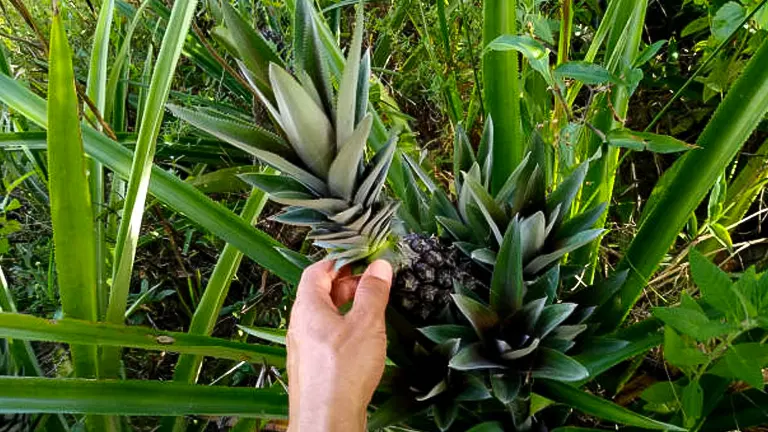
Pruning is another essential practice in pineapple cultivation, though it’s often overlooked. Proper pruning helps manage plant size, encourages healthy growth, and can improve fruit size and quality. In pineapple farming, pruning primarily involves removing dead or dying leaves and controlling the plant’s size as it matures. It’s important to:
- Prune at the right time: Pruning should be done carefully and at times that coincide with the plant’s natural growth cycles. For instance, removing older leaves can be done periodically, but heavy pruning should be avoided during the fruit development stage.
- Use the right tools: Clean, sharp tools are crucial to avoid damaging the plants or introducing diseases.
- Understand the plant’s growth cycle: Knowing when your pineapple plants are most receptive to pruning can enhance the benefits of this practice.
By following these guidelines, you can ensure your pineapple plants are not only well-fed but also well-maintained, setting the stage for robust growth and fruitful harvests.
Common Mistakes in Fertilizing Pineapples
Fertilization is a delicate balance, and even with the best intentions, mistakes can happen. Awareness of these common pitfalls is the first step toward avoiding them:
- Over-fertilization: Applying too much fertilizer can lead to nutrient burn, where the roots suffer damage, inhibiting the plant’s ability to absorb water and nutrients. This often manifests as browned leaf tips and reduced growth.
- Under-fertilization: Conversely, providing too little can starve the plant of essential nutrients, leading to stunted growth, pale leaves, and poor fruit development.
- Wrong timing: Fertilizing at incorrect times can waste resources and potentially harm the plants if they are not in an active growth phase or are preparing for dormancy.
- Neglecting soil pH: Pineapple plants thrive in slightly acidic soils. Ignoring soil pH can lead to nutrient lock-up, where plants cannot access the nutrients in the soil, regardless of fertilization efforts.
Advanced Tips for Maximizing Pineapple Plant Health and Yield

For those looking to elevate their pineapple cultivation to the next level, consider these advanced tips:
- Tailored nutrient application: Beyond the N-P-K ratio, elements like magnesium, calcium, and iron play critical roles in the health and productivity of pineapple plants. Tailoring your fertilization program to include these micronutrients can significantly impact plant vigor and fruit quality.
- Fertilizer zoning: Apply fertilizers in zones around the plant base, targeting the root zone rather than spreading it evenly over the soil. This technique ensures nutrients are placed where they can be most effectively absorbed.
- Regular soil testing: Annual or biannual soil tests can guide your fertilization strategy, ensuring that nutrient applications meet the evolving needs of your pineapple plants.
Environmental Considerations
Sustainable fertilization practices not only benefit your pineapple plants but also the environment. Here’s how you can minimize your ecological footprint:
- Organic fertilizers: These natural options contribute to soil health over the long term, improving structure, moisture retention, and microbial activity. They release nutrients slowly, reducing the risk of leaching and pollution.
- Efficient watering: Over-watering, especially when combined with fertilization, can lead to nutrient runoff, potentially harming local waterways. Implementing efficient watering techniques, such as drip irrigation, ensures that water and nutrients are delivered directly to the plant roots where they’re needed most.
- Integrated pest management (IPM): This approach reduces the need for chemical inputs by encouraging natural pest control methods. Healthy, well-fertilized pineapple plants are more resistant to pests and diseases, further decreasing the reliance on harmful pesticides.
Adopting these practices not only enhances the yield and health of your pineapple plants but also contributes to a healthier planet. By being mindful of the environmental impact of our gardening choices, we can enjoy the fruits of our labor without compromising the well-being of the ecosystem.
Related Post
- How to Fertilize a Mango Tree Effectively: Tips and Tricks for Healthy Growth
- How to Fertilize Apple Trees: Essential Tips for a Bountiful Harvest
- How to Fertilize Lemon Trees: Secrets for Thriving Citrus
- How to Fertilize Avocado Tree: A Step-by-Step Guide for Lush Growth
Conclusion
Cultivating thriving pineapple plants is a rewarding endeavor that combines the art of gardening with the science of plant care. Through careful attention to fertilization, spacing, pruning, and environmental stewardship, you can achieve bountiful harvests of this delightful fruit. Remember, the secrets to success lie in understanding the needs of your plants, avoiding common pitfalls, and continually seeking knowledge and improvement.
FAQs
- What is the best time of year to start fertilizing my pineapple plants?
Begin fertilizing your pineapple plants at the start of their active growth period, which typically coincides with the spring and summer months. Adjust based on your local climate, aiming to start as temperatures consistently warm. - How often should I fertilize my pineapple plants?
Fertilize your pineapple plants every 4-6 weeks during their active growth phase. During the cooler months or the plant’s dormant period, reduce the frequency to every 8-10 weeks. - Can I use organic fertilizers for my pineapple plants, and if so, which ones?
Yes, organic fertilizers are excellent for pineapple plants. Options include compost, fish emulsion, blood meal, and bone meal. These provide a slow-release of nutrients, improving soil health over time. - How do I know if I’m over-fertilizing my pineapple plants?
Signs of over-fertilization include leaf burn (browning of leaf tips), wilting, and stunted growth. If you notice these symptoms, reduce the amount and frequency of fertilization. - Should I water my pineapple plants immediately after fertilizing?
Yes, watering after applying granular fertilizer helps to distribute the nutrients into the soil, making them more accessible to the plant’s roots. For foliar feeds, this is not necessary. - Is it necessary to adjust the soil pH before fertilizing pineapple plants?
Pineapples prefer slightly acidic soil (pH 5.5 to 6.5). If a soil test indicates the pH is outside this range, adjust it using sulfur to lower the pH or lime to raise it before applying fertilizers. - Can I make a homemade fertilizer for my pineapples? If yes, what’s a simple recipe?
A simple homemade fertilizer can be made by mixing equal parts of compost, coffee grounds, and Epsom salt. This mixture provides nitrogen, potassium, and magnesium, beneficial for pineapple growth. - What specific nutrients are essential for pineapple plant fertilization, and why?
Nitrogen (N) for foliage growth, Phosphorus (P) for root and flower development, and Potassium (K) for overall health and fruit quality. Additionally, micronutrients like magnesium and calcium are crucial for preventing common deficiencies in pineapple plants.
This guide is aimed at arming you with the necessary techniques for properly fertilizing pineapples, steering you towards significantly improving the care of your pineapple plants. Here’s to a garden overflowing with strong, flourishing pineapples!

Benjamin Brooks
Forestry AuthorGreetings! I'm Benjamin Brooks, and my journey over the past 15 years has revolved around the fascinating realms of content creation, expertise in snow clearing, and the intricate world of lumberjacking and landscaping. What began as a simple curiosity about the natural world and heavy machinery has evolved into a passionate profession where my love for crafting words intertwines seamlessly with my lumberjacking and garden skills.













Please, it will be a great favor if you can list the fertilizer table into liters(ppm) for the whole season of pineapple for soluble granular fertilizer. Including NPK, Iron, Magnesium & Calcium. Thanks
Neeraj
July 24, 2024 5:19 pm